Today we’re going to be checking out the new FiiO K7 BT DAC & AMP with Bluetooth. It’s selling for $249 USD.
Disclaimer: FiiO sent us the FiiO K7 BT for this review. As always, I am here to convey my honest experience with the product.
FiiO Company
FiiO is one of the most popular, audiophile-oriented companies in the world. Since 2007 they have been designing and manufacturing a wide range of audio products for different price ranges. They have distribution networks all over the world. Today, we will take a closer look at FiiO’s latest addition to their DAC & AMP line-up, the K7 BT. We have reviewed and awarded a lot of FiiO equipment here at Headfonia over the years and you can read those reviews here: Headfonia FiiO Reviews.
FiiO K7 BT – Desktop DAC & AMP with Bluetooth
Launched last year, FiiO’s K7 desktop DAC/AMP quickly gained a substantial user base and won numerous awards worldwide. Through customer interaction, FiiO identified a significant need for Bluetooth. In response, they introduced the K7 BT, the Bluetooth-enabled version of the K7.
The FiiO K7 BT differs from its predecessor by incorporating the QCC5124 Bluetooth chip. This addition enables support for a range of Bluetooth formats including LDAC, aptX Adaptive, aptX, aptX HD, aptX LL, AAC and SBC. LDAC offers superior audio quality and performance compared to several other codecs. In addition, the FiiO Control APP enhances the wireless experience with Bluetooth firmware upgrades, Bluetooth format selection and PEQ customization.
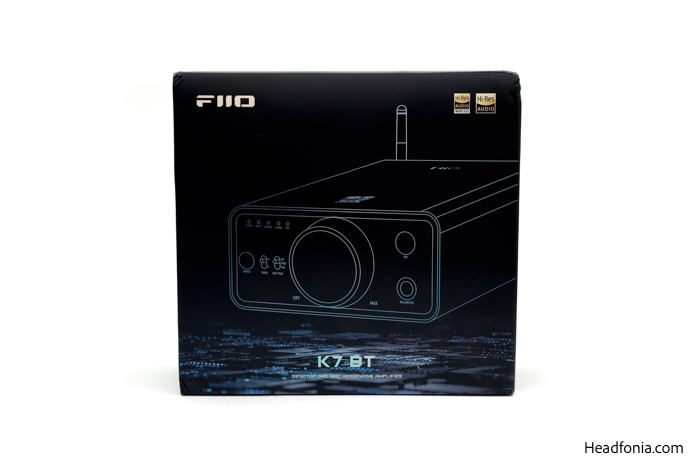
The K7 BT is built around two AK4493SEQ DACs from AKM, an updated version of AKM’s highly regarded AK4493 DAC chipset. Like the more expensive K9 Pro ESS we reviewed, the K7 and K7 BT uses THX 788+ amplifier modules and features a fully balanced architecture. Volume control is handled by two NJU72315s for each channel, and FiiO has incorporated numerous LDOs to filter out unwanted noise. Unlike many other models, the K7 and K7 BT does not have an integrated PSU/SMPS inside the chassis. Instead, power is supplied via a compact DC 12V/2A adapter, similar to the K5Pro ESS.
Below I’ve highlighted the key features of the new K7 BT.
DAC: AKM AK4493SEQ x2
AMP: THX 788+ x2
Bluetooth: Qualcomm QCC5124 with LDAC
+FiiO Control App & OTA Firmware Support
USB Controller: XMOS XUF208
Sampling Rate Support: Native DSD256 – PCM 32bit-384kHz
Power: SE 1.2W (@32Ω) – BAL 2W (@32Ω)
Gain: Low 0dB / High +6dB
Output Impedance: <1Ω
Ports: RCA IN, RCA OUT, USB B IN, COAX, OPT, 6.3MM PO, 4.4mm BAL
Dimensions & Weight: Approx. 120 x 168 x 55 mm – 600 grams
MSRP: $249 USD (Aliexpress FiiO Store)
K7 BT’s dedicated web page can be reached here. K7 BT’s user manual and drivers can be found here. I also recommend keeping an eye on the downloads page for future firmware updates.
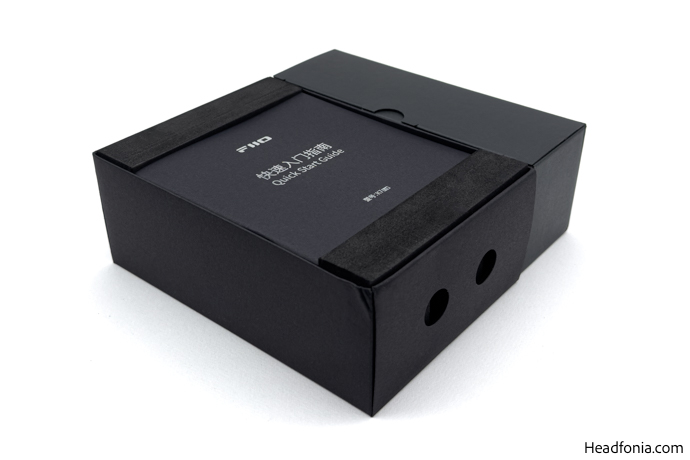
Packaging & Accessories
The K7 and K7 BT come in FiiO’s new packaging, which is covered with a coating that gives a kind of rainbow effect. The packaging looks nice and is pleasing to the eye. The contents are neatly packaged and the device is held in place by a foam and rigid cardboard compartment to protect it from damage during transit. Next to this compartment is a rectangular box with accessories and the adapter inside. We see a detachable C5 cable and a relatively small switching power supply with a 12V barrel connector on the other end.
There’s also a manual, a warranty card, a gold-plated 6.35mm to 3.5mm converter, and a shielded USB cable with a small ferrite bead. In addition, the K7 BT version comes with a long antenna for better Bluetooth signal range and stability.
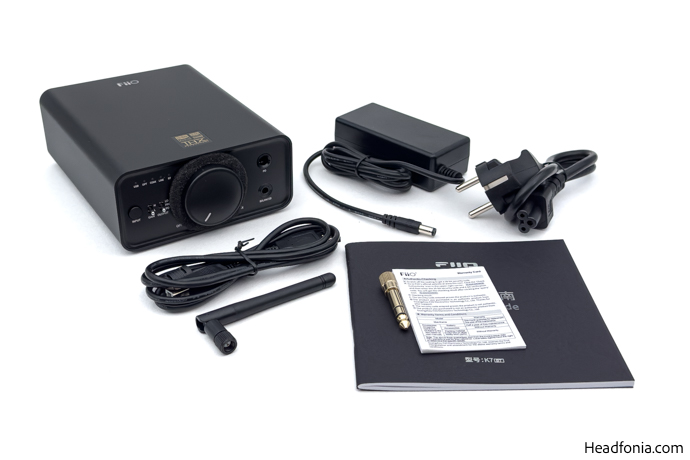
Design & Build Quality
The K7 and K7 BT share the same design and build quality.
Measuring 12 x 16.8 x 5.5 centimeters, the design of the K7 and K7 BT is “compact” for an all-in-one device. Let’s take a closer look at what FiiO has changed and improved with the K7. First, we see a changed and improved front panel. Compared to the K5Pro, the input lever has been removed and replaced with a low-profile button. Right next to the input button are 2 switches. One controls the gain and the other changes the active output. Above this area are 4 white LEDs that light up depending on the active input. Although FiiO seems to have left the design of the volume wheel in the middle untouched, the frame that surrounds the wheel and allows the LEDs to glow more softly has changed. RGB LEDs are now used here, and they emit a softer light compared to the K5Pro. This looks and glows much better, especially in a dimly lit room. On the right side of the panel are the PO and BAL headphone outputs, one on top of the other.
The rest of the I/O options are located on the back of the unit. Here we see RCA Line In, RCA Pre/Line Out, Coax, Optical and USB inputs. Power is supplied via a 12V barrel connector. There is a BL antenna socket near the power barrel connector for the K7 BT’s antenna. Overall, the layout is quite simple and straightforward. It won’t be hard to find your way around this DAC & AMP.
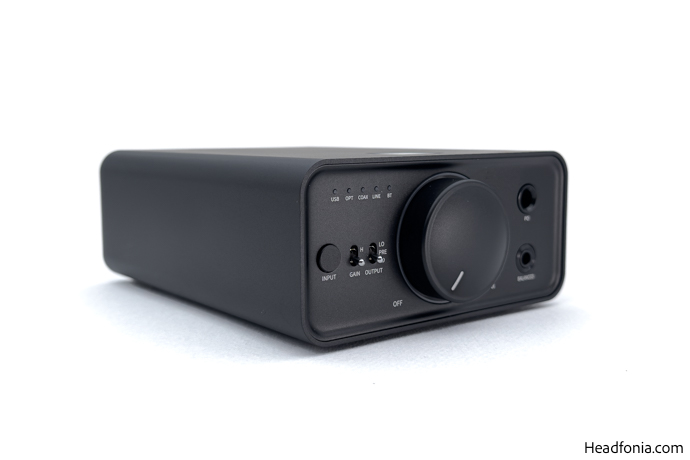
Features, Technology & Power
The K7 and K7 BT share the same audio specs.
The K7 BT represents a total redesign of the audio PCB compared to the K5Pro. In my K5Pro review, I suggested that FiiO needed to keep pace with smaller, ambitious companies. With the K7 BT, FiiO has met my expectations, creating a highly competitive device for the desktop market. The K7 BT employs dual AKM DACs and dual THX 788+ modules, similar to the K9 Pro ESS. The use of dual premium-tier 4493SEQ DAC chips in this price range is quite uncommon. The K7 BT boasts a balanced architecture and MCU-controlled volume via dual NJU72315s. I observed improved channel balance compared to the K5Pro, particularly at extremely low volumes, but there was a slight delay when adjusting the volume. FiiO’s FAQ page for the K7 BT explains this latency.
According to FiiO, the K7 BT’s built-in MCU detects the rotation of the knob and processes it. The process involves rotating the knob, MCU sensing and anti-shake processing, converting it to a value, sending volume adjustment instructions to the electronic volume chip, and changing the volume. This process, while fast, results in a small delay due to the MCU’s need for error correction measures to ensure stable processing.
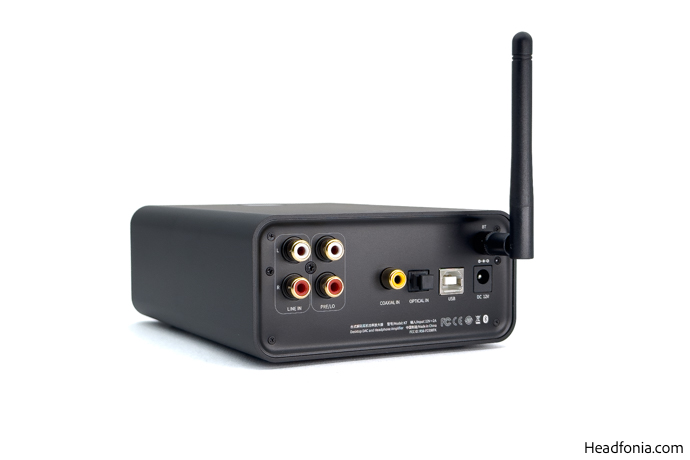
Now, let’s delve into the device’s features. The device uses the integrated XMOS XU208 USB controller, a reliable option we’ve tested on several devices across different price brackets. The K7 BT can natively decode up to 32-bit 768kHz PCM and DSD up to 256. It also offers OTG support for Android phones and compatibility with Apple phones running iOS 11 and higher. The XU208 allows FiiO to release future firmware updates. Keep an eye on FiiO’s downloads page for such updates. The device supports Thesycon drivers on Windows but can run driverless on macOS, Android, and iOS.
The volume wheel’s light ring features RGB LEDs, and the device switches on and off with colorful light effects. During operation, the ring changes color according to the sample rate of the active playback. The K7 BT only comes with single-ended LOs, and I would have preferred to see balanced XLR or balanced TRS outputs here because of the high-quality DAC chip pair inside the device. However, the balanced output is only available through the 4.4mm port on the front panel. Despite this, FiiO’s offering of a technically superior device at the same price as the previous generation is praiseworthy. The K7 BT uses a fully balanced architecture and offers more power and better specs compared to the K5Pro, which is fantastic, especially if you’re looking for a DAC & AMP for your IEMs or headphones. I believe the K7 BT is one of the most logical options in this price range.
Regarding power, the K7 BT uses two THX 788+ amplifier modules, which we’ve seen in FiiO’s higher-end K9 Pro ESS DAC & AMP. These modules deliver less power on the K7 BT, which FiiO explains is due to the power consumed and heat generated by the modules. As a K9 Pro ESS user, I think this optimization was a good decision. During operation, the K7 BT is warm to the touch but not uncomfortably hot. The K7 BT can deliver 1.2 watts of power to a 32-ohm load via its SE output and 2 watts of power via the balanced HPO. With 560mW of power into a 300-ohm load, it has plenty of power to drive nearly every single planar or dynamic headphone on the market.
The article continues with the part on sound on the next page. Click here or use the buttons below.
Page 1: FiiO, K7, Packaging & Accessories, Design & Build Quality, Features, Technology & Power
Page 2: Bluetooth Capability, FiiO Control App Support, Wireless Performance, DAC Performance, DAC & AMP Performance, Comparisons, Last Words







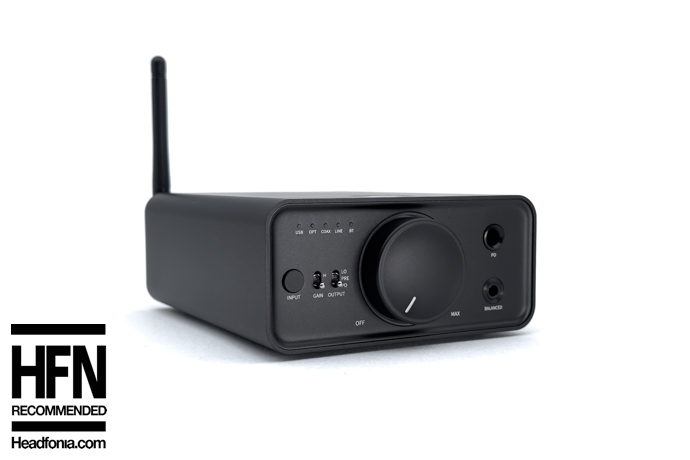
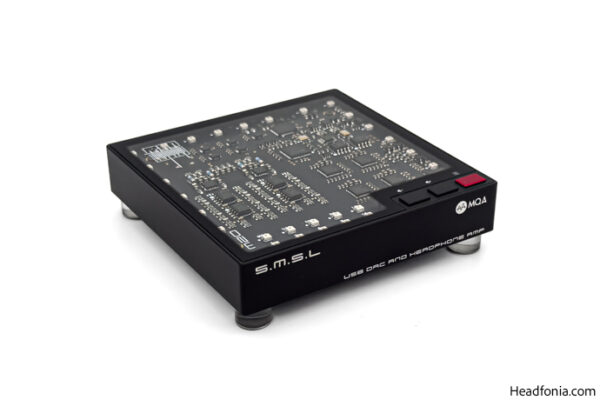
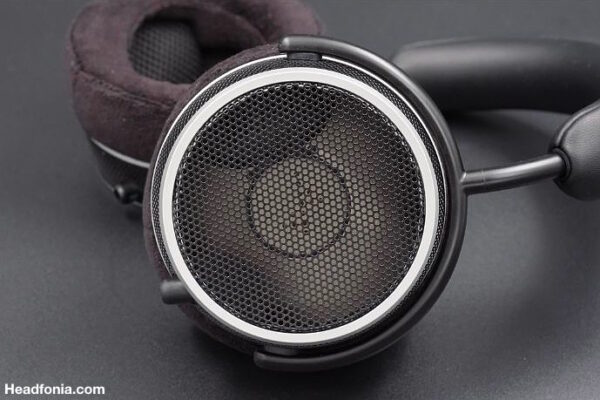
Johnny
Is there still a volume delay on the BT version? Ive seen one reviewer say the knob is more responsive than the original.
Yagiz
Hello Johnny,
It’s more or less the same between my units. No marginal difference whatsoever.
Cedric
Hello
I am looking for an Amplifier/DAC and I was wondering what is your recommandation between the TOPPING EX5 & the FiiO K7 BT to rule a FOCAL ELEGIA helmet and a AKG K 240 Studio
The source is an iMac and/or an iPhone with Qobuz Studio
I plan to buy later studio active spreakers
thanks for your advise
Julien
Hello, thank you for your detailed tests.
I am currently testing some DACs with my Beyerdynamic DT 1990 Pro (Creative X5, Fiio K7 BT, K5 Pro ESS, K11 R2R and Topping DX3 Pro+).
For the moment my choice is leaning towards the K7 BT.
I am still within the withdrawal period for all these DACS and I saw that you tested the Topping DX5 by mentioning “the DX5 is one of the best DACs I have ever heard during my audiophile journey”.
The K7 BT being more recent, do you think there is today an added value in opting for the DX5 rather than the K7 BT?
Have a nice day
Yagiz
DX5 is slightly better imo, however, if you are happy with the K7 BT you’re currently testing, I’d stick with it and save for more headphones. Multiple HPs > Multiple DACs.
Julien
Thank you for your feedback.
I can confirm that your tests perfectly match the listening I had of these DAC/AMP!
In the meantime I acquired a DX5 to compare it directly with the K7 BT.
Both are really excellent and it was really difficult to choose.
The K7 BT has deeper bass and a much rounder ensemble.
The DX5 has dry but controlled and punchy bass and above all highlights the mids compared to the K7 BT on which they are a little behind.
I reluctantly return the K7 BT, it is well built and timeless visually and a priori with a balanced headset it would be better, but I can only keep one and currently I have a DT 1990 Pro only asymmetrical with which the DX5 suits me slightly better.
Let’s cross our fingers for reliability now, I have read here and there that Topping was not too good.
But I took good note of your remark “Multiple HPs > Multiple DACs.” and I will apply it in the future.
Thanks again for your precise and detailed articles.
Yagiz
You’re welcome Julien. Hit me up anytime, I’ll be glad to help out!
Emir
İnceleme için teşekkürler. Kafamı karıştıran bir durum var. Bu cihazı satın almayı düşünüyorum. Masaüstü Windows 11 Bilgisayarıma bu cihazı bağlasam (USB ya da optik çıkış üstünden) kablosuz kulaklıklarımla müzik dinlemem mümkün mü ? Ses kalitesinde fark olur mu ?